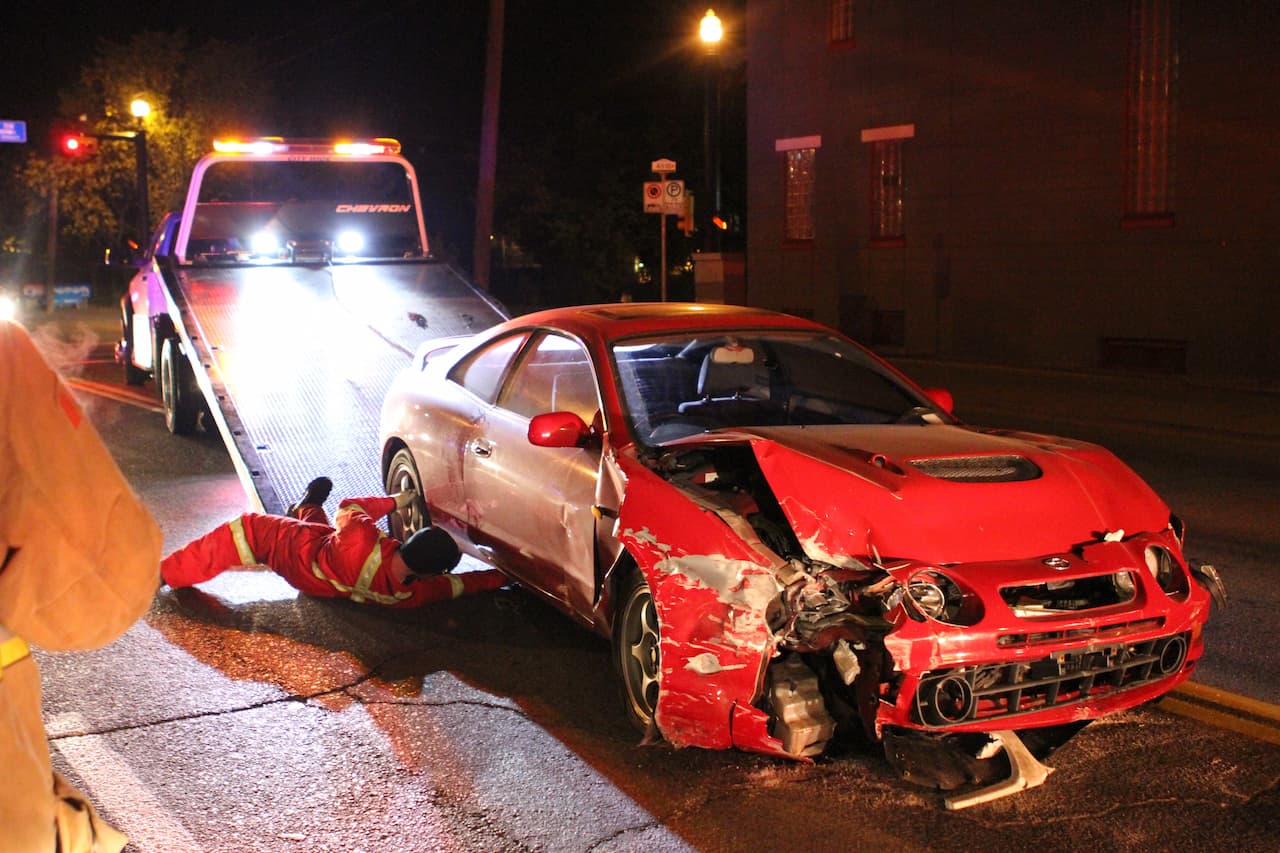
May 2022 wasn’t a very good month for House Speaker Nancy Pelosi. The Catholic Church said her pro-abortion beliefs made her ineligible for communion, she had a bout with COVID-19, and her husband was charged with DUI-injury in Napa Valley.
Details are still emerging in the case. But, here’s what we know now. Although he caused a collision under the influence of alcohol (a post-crash blood test placed his BAC level at .082), Pelosi only faces misdemeanor charges. “Under California law, these charges can be filed as a misdemeanor or felony,” prosecutors said in a statement. “Based upon the extent of the injuries suffered by the victim, the district attorney filed misdemeanor charges. This decision is consistent with how our office handles these cases with similar injuries.”
According to California Highway Patrol investigators, who initially concluded the wreck was a non-injury crash, Pelosi, who was driving a 2021 Porsche, tried to cross State Route 29 and collided with a Jeep.
Injuries in Alcohol-Related Wrecks
Normally, the injuries in an alcohol-related wreck are catastrophic. For the reasons outlined below, most tortfeasor (negligent drivers) are traveling at or near top speed at the moment of impact. Impaired or intoxicated motorists frequently misjudge distances or timing, and they also cannot react quickly to rapidly changing events. Some specific injuries include:
Money is related to quality of care. Usually, group health insurance companies only approve the cheapest treatments. To ensure that victims get the treatment they need, and not the treatment an adjuster is willing to authorize, a New York personal injury lawyer connects victims with doctors who charge nothing upfront.
Establishing Responsibility
Frequently, the amount of damages is the most controversial issue in an alcohol-related crash claim. Sometimes, legal responsibility for the wreck is even bigger.
In the Paul Pelosi wreck, based on what we know now, two cars basically collided in an intersection. Such wrecks often involve the last clear chance rule.
Assume Arnie is southbound on Main and Carl is eastbound on Elm. They approach the intersection at about the same time. There’s no stop sign on Main. So, if these two guys collide, Carl is at fault for the collision, since Arnie had the right-of-way. However, the case is not open and shut.
If Carl rolled through the stop sign while Arnie was about three or four car lengths away, Arnie probably could’ve slammed on his brakes and avoided the wreck. In other words, he had the last clear chance to stop the collision. Therefore, under these facts and under New York law, Arnie is legally responsible for the wreck, even though he had the right of way.
We’re not finished. Sometimes, weather, traffic, and other conditions have an effect. If the road was slick, if Arnie slammed on his brakes, he might lose control of his car, and cause an even more serious collision.
We know this discussion is highly technical. But, it illustrates the process that a New York personal injury attorney must go through just to determine responsibility.
First Party Liability
An .082 BAC is just above the legal limit in New York, California, and most other states. Note that officers analyzed a blood sample taken about two hours after the collision. Depending on some additional factors, such as Pelosi’s metabolism and when he had his most recent drink, his BAC at the time of the wreck might have been higher or lower. The bottom line is that, if a criminal case goes to trial, the charges might or might not hold up in court, based on the blood sample.
However, in civil court, the negligence per se presumption usually applies, even if the tortfeasor “beats” the criminal case in court. A civil jury determines all the facts in a civil case, including DUI guilt or innocence. The burden of proof is only a preponderance of evidence (more likely than not) in civil court. If Pelosi, or anyone else, is charged with a crime, it’s more likely than not that s/he’s guilty.
In negligence per se claims, victim/plaintiffs don’t have to prove the traditional elements of a negligence case, like duty and breach of duty. However, additional evidence is usually relevant as to the amount of damages. Generally, the more evidence a victim/plaintiff has, the more compensation jurors award.
This compensation usually includes money for economic losses, such as medical bills, and noneconomic losses, such as pain and suffering.
Many drivers aren’t intoxicated, but they are impaired. Most people are intoxicated after three or four drinks. Impairment begins with the first drink. Alcohol’s impairing effects include clouded judgment and slow reactions.
Impairment violates the duty of care. This legal responsibility requires drivers to be at their best, physically and otherwise, when they get behind the wheel. If the breach caused the crash, compensation is available.
Third Party Liability
In California, liability questions in alcohol-related wrecks usually end at this point. But New York has a dram shop law. This law holds commercial providers, like restaurants and bars, vicariously liable for damages if the provider illegally sells alcohol to someone who then causes a car crash or other injury. Some illegal sales in New York include:
We’ll close this blog by going back to the injuries in an alcohol-related wreck. New York has one of the lowest auto insurance minimum requirements in the country. Therefore, many drivers don’t have enough coverage to fully compensate victims for their serious injuries. Vicarious liability gives these victims an additional source of recovery.
Injury victims are usually entitled to substantial compensation. For a free consultation with an experienced personal injury attorney in New York, contact the Pianko Law Group, PLLC. You have a limited amount of time to act.